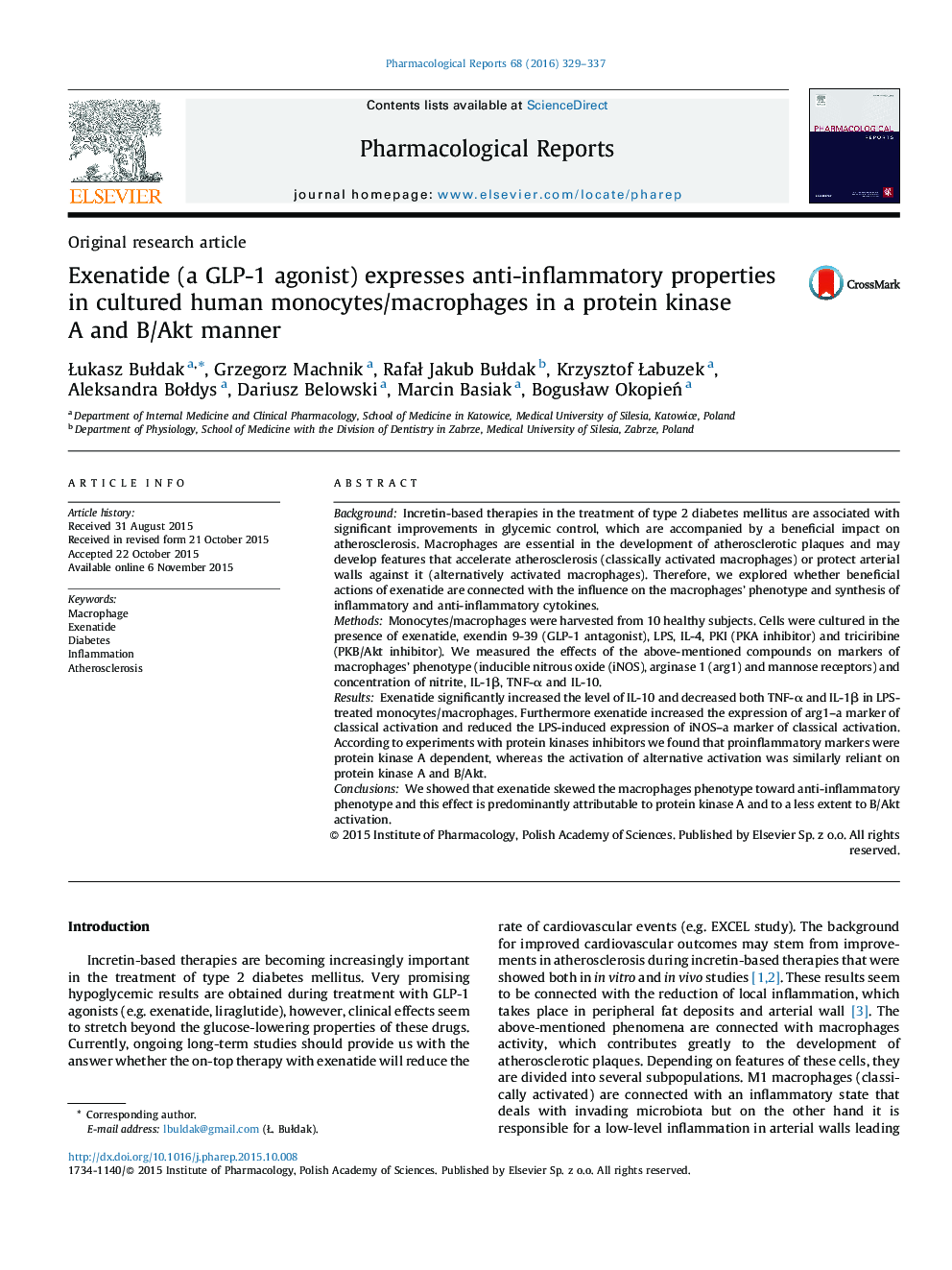| Article ID | Journal | Published Year | Pages | File Type |
|---|---|---|---|---|
| 2011639 | Pharmacological Reports | 2016 | 9 Pages |
BackgroundIncretin-based therapies in the treatment of type 2 diabetes mellitus are associated with significant improvements in glycemic control, which are accompanied by a beneficial impact on atherosclerosis. Macrophages are essential in the development of atherosclerotic plaques and may develop features that accelerate atherosclerosis (classically activated macrophages) or protect arterial walls against it (alternatively activated macrophages). Therefore, we explored whether beneficial actions of exenatide are connected with the influence on the macrophages’ phenotype and synthesis of inflammatory and anti-inflammatory cytokines.MethodsMonocytes/macrophages were harvested from 10 healthy subjects. Cells were cultured in the presence of exenatide, exendin 9-39 (GLP-1 antagonist), LPS, IL-4, PKI (PKA inhibitor) and triciribine (PKB/Akt inhibitor). We measured the effects of the above-mentioned compounds on markers of macrophages’ phenotype (inducible nitrous oxide (iNOS), arginase 1 (arg1) and mannose receptors) and concentration of nitrite, IL-1β, TNF-α and IL-10.ResultsExenatide significantly increased the level of IL-10 and decreased both TNF-α and IL-1β in LPS-treated monocytes/macrophages. Furthermore exenatide increased the expression of arg1–a marker of classical activation and reduced the LPS-induced expression of iNOS–a marker of classical activation. According to experiments with protein kinases inhibitors we found that proinflammatory markers were protein kinase A dependent, whereas the activation of alternative activation was similarly reliant on protein kinase A and B/Akt.ConclusionsWe showed that exenatide skewed the macrophages phenotype toward anti-inflammatory phenotype and this effect is predominantly attributable to protein kinase A and to a less extent to B/Akt activation.
